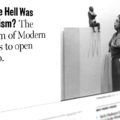“Like most European Expressionists, Wassily Kandinsky was entranced by the power of color. His abstract paintings feature a calligraphic style evocative of musical symphonies, further accentuated by violently clashing shades that reveal, in Kandinsky’s own words, ‘color is the keyboard, the eyes are the harmonies, the soul is the piano with many strings. The artist is the hand that plays, touching one key or another, to cause vibrations in the soul.’”
—Meilan Solly, Smithsonian
“The [1937] exhibition handbook explained that the aim of the show was to ‘reveal the philosophical, political, racial and moral goals and intentions behind this movement, and the driving forces of corruption which follow them.’”
—Lucy Burns, BBC
Propaganda is all about “us versus them.”
And the strategy of propaganda does not work without constant reinforcement that the opponent has become the enemy because of its supposed corruption, ideally, in all spheres of life.
The fastest and most digestible way to explain this to the masses is through visuals.
Caricatures always played a big role in depicting the needed narrative.
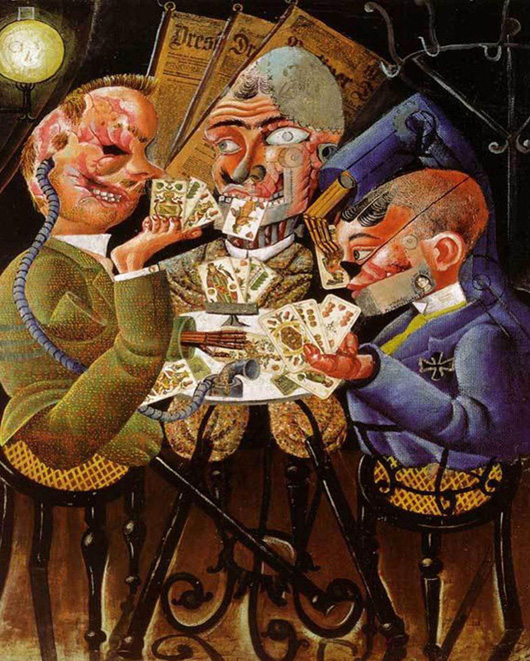
One does not have to spend time and mental power to read or listen to an argument – instead, it just takes a few moments for eyes to scan and understand the image being presented.
This is the con: It is widely known that the caricature was created by the opposing side and does not equal the reality.
Fortunately for Nazi Germany, Modern Art could expose its “sickness of the mind” by just existing.
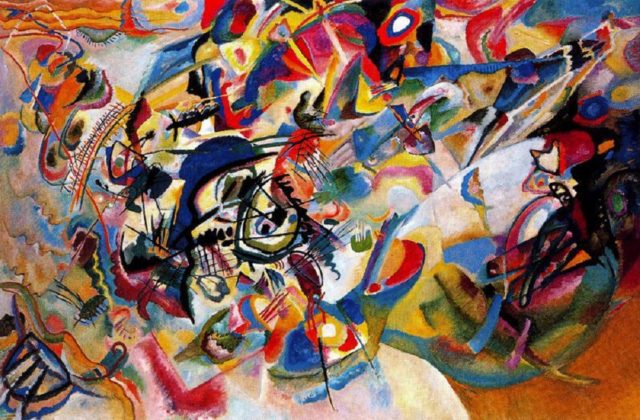
The avant-garde of the time, with all its honesty, emotion and bravery had already gained all the praise from the intelligentsia of the 1930s.
Works of Wassily Kandinsky, Paul Klee and Henri Matisse were in high demand. But, just as now, the expressivity of the pieces was not unanimously understood.
Germany was highly aware of the negativity surrounding the emerging art movements …
While in power, Adolf Hitler’s own perspective on what is considered art shaped the years of visual representation: A good artist makes paintings and sculptures that depict the reality: Not an honest representation of the current events, but a romanticized and polished image of western superiority.
Subjects depicted should refer to the inherent beauty of the country and its people.
Such style stood in contrast with what the avant-garde depicted: Corruption, senseless war, thousands of murders, homeless amputees on the streets, desperate prostitutes, and the ugliness of the society – both mental and physical – were just a few topics Expressionists documented.
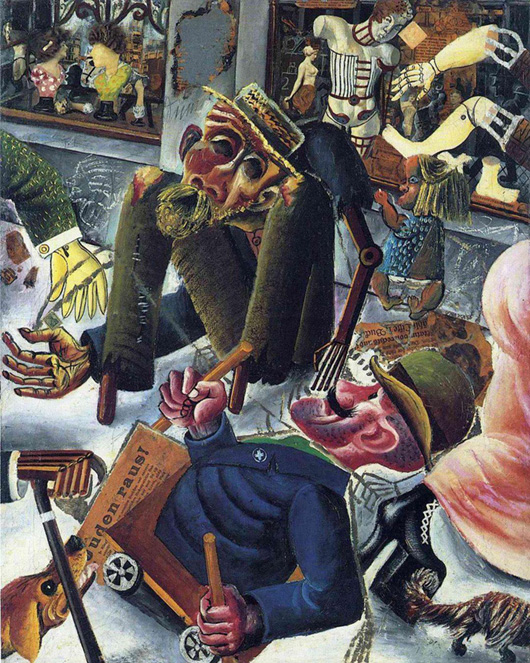
And, naturally, many bourgeoisie did not want to see the truth they tried so hard to ignore in the real life – and especially to be significantly exhibited in the safeness of proper museums!
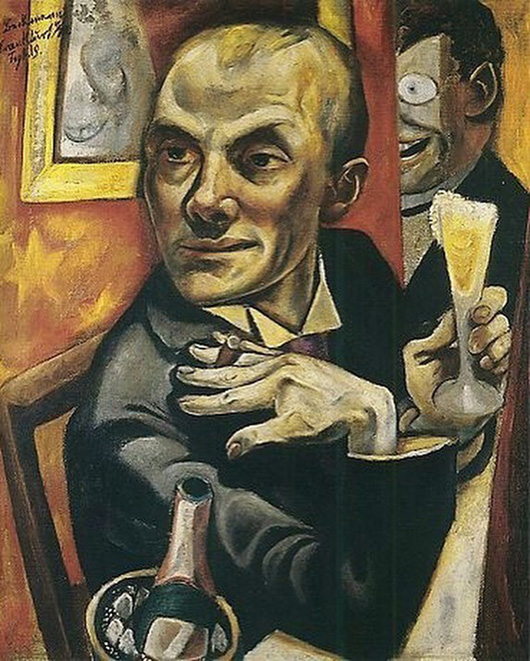
Artists that were not ideologically aligned with the Reich were not executed.
Instead, they were publicly humiliated in a show that has become one of the most visited during the entire 20th century:

Welcome to the “Degenerate Art” exhibition.
The collection was carefully curated. The unnatural, the dirty, the Jewish, the experimental: These were some of the few adjectives that would lead the artwork in this notorious exposition.
It was important for the organizers to put the message clear to its brainwashed audience: This is the downfall of our enemies!
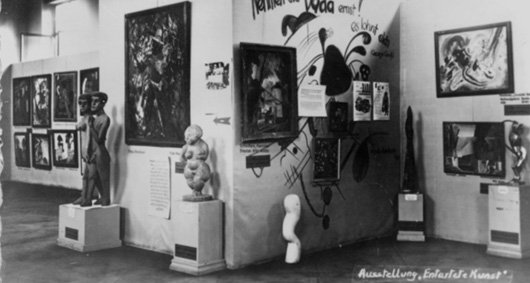
Writings on the walls only reinforced the thought, as few would try to publicly try to argue with such sayings as The ideal – cretin and whore.
The subject of paintings, if they were not too abstract, would often depict mutated proportions and the outsiders of the society.

The artists themselves – in their explorations – were not afraid to play with colours, shapes and themes – but this was seen as a great sin committed against the image of perfection of the Aryan Nation!
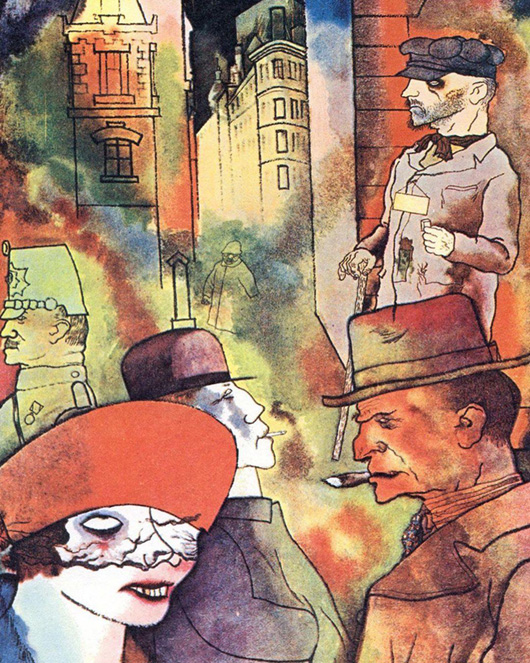
The curators did their best to expose the avant-garde as a group of mentally ill, dangerous to the ethics and morals of a “normal” society.
Success was guaranteed as it was not only acceptable to criticize art that one did not understand, but it was also seen as noble and righteous.
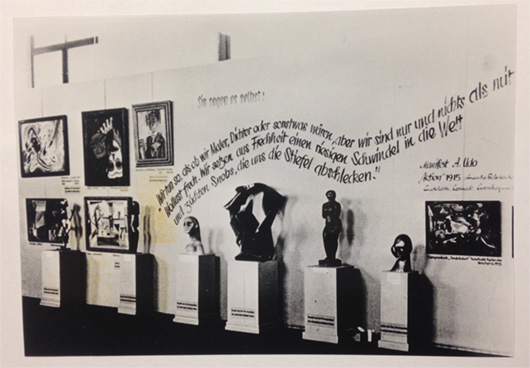
The exhibition was visited by almost 3 million, travelled to several German cities, and was judged by the rest of the European world.
The goal was not just in proving the rottenness of the opposition, but to destroy the rising talents that dared to express their disgust towards the authority.
By the end of things, many fled the country, some even committing suicide after realizing their helplessness against Hitler and his followers.
Many pieces were offered to be sold abroad after being confiscated from the national galleries, however, western art-dealers saw buying from the Reich was equal to supporting it; Sadly, many masterpieces that could have been acquired for as little as the equivalent of 10 euros were destroyed as a result.
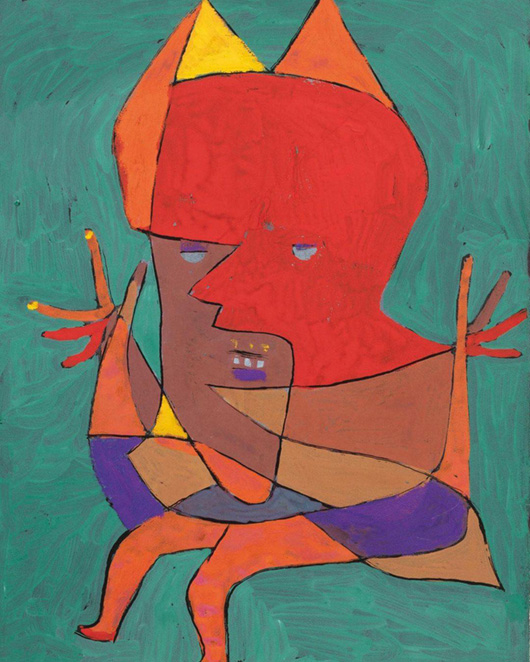
The power of propaganda lies within suppressing anything that has any potential of differentiating from the status quo, in this case, the newly established norm.
Unfortunately, if done subtly enough, the audience may not even realize that what is going on.
History has repeated itself numerous times, and it is more than never important not to blindly fall into the wide open arms of a propagandistic machine.
—purplesfinx
Flommist Veronika Vezirova, a.k.a. Purplesfinx, is an illustrator and graphic designer based in Barcelona. Inspired by culture of all kinds, she writes on topics that include art history, creativity and folklore. Her other works include manga and psychedelic poetry. Copyright © 2022 Veronika Vezirova.
PLEASE SUPPORT FLOMM
TIPS + DONATIONS DISCREETLY ACCEPTED














